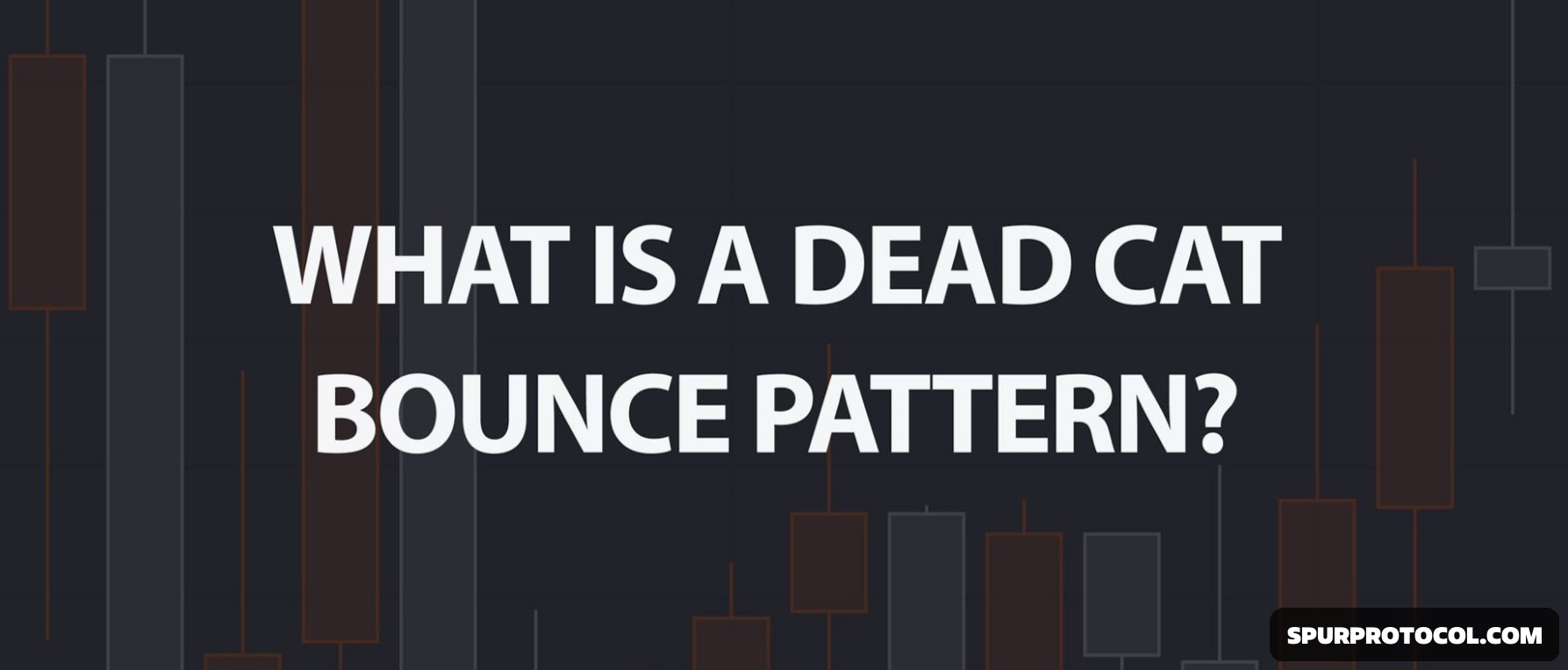WHAT IS DEAD CAT BOUNCE
You have a toy that keeps falling down the stairs; thump, thump, thump!
At one point, it hits a step and bounces up a little, but then it keeps falling again.
That little bounce? It doesn’t mean it stopped falling; it just looked like it might get better for a second.
That’s what a Dead Cat Bounce is onchain. When a crypto is going down really fast, sometimes it suddenly goes up just a tiny bit. People might get excited and think it’s recovering but it’s not. It’s just a quick bounce before it drops again.
The name is kind of dark, but it comes from the idea that even a dead cat will bounce a little if you drop it from high enough. Not because it’s alive; just physics.
A DEAD CAT BOUNCE IS DEFINED AS AN ASSET, SUCH AS A STOCK, THAT SEES A TEMPORARY RECOVERY AFTER A SUBSTANTIAL DOWNTREND. THE MEANING BEHIND A DEAD CAT BOUNCE IS THAT THE RALLY IS LIKELY TO BE SHORT-LIVED SINCE THE STOCK IS IN AN OVERALL DOWNTREND....
How To Identify a Dead Cat Bounce
The charting pattern is composed of three main traits. A downtrend, a rally or pullback against the trend, followed by the price rolling over and starting to drop again.
The best way to learn how to spot it is to review the charts of stocks or other assets that are in downtrends. Those brief rallies interspersed between declines are what defines the pattern.
Characteristics of a Dead Cat Bounce
A dead cat bounce is characterised by specific market behaviours that signal a temporary recovery amidst a prolonged downtrend. Recognising these features can help traders avoid being misled by false recoveries.
Sharp Decline Preceding the Bounce: A significant drop in asset prices that breaks through single or multiple support levels.
Brief and Sudden Rebound: The asset experiences a quick, short-lived rise in price.
Low Trading Volume: The bounce usually occurs with lower trading volume compared to the initial decline, indicating weak buyer interest.
Continuation of Downtrend: After the brief rebound, the asset's price continues to fall, often reaching new lows.
Lack of Strong Fundamentals: The recovery lacks strong fundamental support, often driven by short-covering or speculative buying rather than genuine positive news.
Causes of a Dead Cat Bounce
A dead cat bounce is typically caused by several common factors that create a temporary illusion of recovery in a declining market.
Short-Covering: Traders who have previously sold the asset buy it back to cover their positions, causing a temporary price increase.
Speculative Buying: Some investors buy into the declining asset, hoping to capitalise on what they perceive as a bargain, which briefly drives prices up.
Technical Support Levels: The asset hits a technical support level, prompting a temporary rebound as traders react to these key price points.
Positive News: Positive news related to the asset, such as cost-cutting measures in a company, strong country GDP growth, or even rumours can cause temporary optimism and buying interest.
In conclusion
Don’t rush to buy just because something seems like it’s going up after a big drop. Take your time, do your homework, and be patient.
Not every bounce means a recovery and being careful can save you from a costly mistake.
If this was valuable, plz repost and gib me a follow. Tenkz🙂↔️

